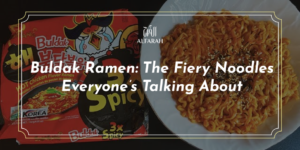The food lovers of the entire world love a tortilla wrap. Additions to your meals through these wraps fit into all kinds of eating situations, including lunchtime or outdoor events. A tortilla represents one type of flatbread product. The production techniques of this food, along with its widespread popularity, remain unclear. The following text explores all aspects of the mouthwatering tortilla experience.
What Is a Tortilla Wrap?
Traditional wheat and corn flatbreads result in the making of a soft and thin tortilla. This food item maintains a wonderful shape when rolled, which makes it suitable for different types of fillings.
Tortillas originated in Mexico, yet their popularity spread worldwide because people adjusted them according to their regional tastes and food components. Tortilla today finds application in burritos, fajitas, quesadillas, wrap meals, roll-ups, as well as pizzas.
A Brief History of Tortillas
Tortillas were first prepared by ancient Mesoamerican cultural groups. The Aztecs and Mayans consumed corn tortillas daily, as they served as both tableware and eating implements. The Spanish brought this flatbread concept from their exploration back to their European territories after first encountering it.
Northern Mexico became the birthplace of wheat tortillas because wheat was easier to obtain than corn at that location. Through time, tortillas advanced into the current version of wraps, which we consume in the present day.
Several Factors Make Tortilla Wrap Such a Popular Food Item
The diverse group of fans who appreciate these wraps includes people for numerous reasons, including
- Manufacturing a meal takes only several minutes because tortilla rolls offer speed and comfort
- The ability to fill tortillas with diverse food combinations, including savory and sweet options, exists
- Perfect for on-the-go meals and packed lunches
- Multiple outlets offer tasty whole wheat and low-carb options that include spinach and low-carb tortillas for customers.
- All tastes are covered with the wide range of fillings that exist to suit any dietary preference or food craving
Different Types of Tortilla Wrap
Different types of tortillas and other wraps exist in the market, with these common examples representative of the category.
Flour Tortilla
People create burritos and quesadillas using a wheat flour combination as the base wrap material. Because flour tortillas have a soft texture, they are easy to roll.
Corn Wrap
Mexican traditional cooking typically uses masa harina-based wraps made from corn flour. This tortilla wrap contains extra thickness alongside a strong, earthy taste.
Whole Wheat Tortilla
Whole wheat wraps contribute higher fiber content and nutritional value than white flour tortillas because of their fiber-rich composition.
Spinach or Tomato Tortilla
The dough receives its colors from chopped vegetables that are added to the mix. The addition of vegetables creates colorful tones, together with minor flavor effects.
Low-Carb or Gluten-Free Tortillas
Great for people with dietary restrictions. The manufacturing of low-carb and gluten-free tortillas uses almond flour, coconut flour, and cauliflower as main ingredients.
How to Make Tortilla Recipes at Home
It takes only a little time to prepare homemade tortilla wraps. The following are simple instructions for making flour tortillas:
Ingredients:
- 2 cups all-purpose flour
- ½ teaspoon salt
- ¾ cup warm water
- 3 tablespoons vegetable oil
Instructions:
- The first step consists of combining flour with salt in a bowl
- Add water and oil. Stir until a dough forms
- Continue mixing the dough until it develops a uniform texture, lasting for around a few minutes
- Place the dough in a resting period of 15 to 20 minutes
- Divide into small balls. Form the balls into circular shapes before proceeding
- Cook in a non-stick skillet on medium heat applied to it.
- Heat the tortilla for one minute on each side of the surface
- Place stacked cooked tortillas inside a clean towel, keeping them both warm and soft
- You now have freshly made wraps prepared for use
Creative Wrap Fillings
Countless filling possibilities make a tortilla wrap truly magnificent. Try the following creative ideas:
Mediterranean Veggie Wrap
Hummus, cucumber, tomato, feta cheese, olives, and spinach.
Breakfast Filling Wrap
The combination includes scrambled eggs with sausage, followed by cheese and a sprinkling of hot sauce.
Sweet Treat Wrap Fill
A sweet combination of peanut butter paired with banana slices alongside honey for topping completes this delicious wrap. This combination provides a delicious treat as both a post-meal dessert and a side snack option.
Tips for the Perfect Wrap Every Time
- The heating of a tortilla makes it more manageable to roll without causing cracks
- Including an excessive amount of ingredients will create a risk of wrap breakage, along with a structural mess
- The correct packing sequence for wraps starts with spreads, followed by proteins,, before adding vegetables
- Start by tucking in the sides before rolling up the wrap from the bottom to the top tightly
Are Tortilla Wraps Healthy?
The consumption of these wraps matches the dietary guidelines of healthy eating. Purchase low-carbohydrate whole-grain wraps for their enhanced nutritional value. The fillings should never be ignored. Choose lean protein sources with fresh vegetables because excessive creamy dressings, together with fried fillings, should be limited.
The blend of turkey with vegetables inside a whole wheat tortilla makes a nutritious meal rather than consuming a bacon-cheese-ranch transitional spread wrap.
How to Store Tortillas
Tortilla rolls can be stored effectively by placing them in either the refrigerator or the freezer. The following tips explain effective storage methods:
- The storage bag should be airtight to keep it fresh in the refrigerator for one week
- Freeze each stack of tortillas by adding baking paper as a separator, then place them in a sealed freezer-safe bag. They can last up to 3 months
- The softening process requires the wraps to rest at room temperature or heat them in a skillet
Fun Ways to Use Tortillas Beyond Lunch
Tortillas aren’t just for wraps! Try these creative uses:
- Tortilla chips: They require cutting into triangles before baking or frying, followed by seasoning
- Tortilla pizza: You can use it as a pizza base with sauce, cheese, and toppings if you do not want to wrap it
- Sushi: It can be used to make a unique sushi variant when seaweed is substituted with a wrap
- Dessert: You can prepare Nutella with strawberries and marshmallows inside by using dessert wraps as containers
Tortilla Wrap: More Than Just a Trend
The tortilla rolls present functional, edible pieces that combine delectability with nutritious value as a healthy food choice. Weekly medical nutrition benefits from adding tortillas into your eating routine since they offer convenience and health benefits for various types of people.
Tortilla rolls allow an endless variety of ingredients to create breakfast through dinner meals, which can be either savory or sweet. To experience the amazing quality of this flatbread, just roll some up anytime you’re in the kitchen.










